I thought since my clematis flowers are as big as a dinner plate, this would be a good time to talk about growing clematis vines. For the beginner gardener, clematis is a great plant to start with because it’s a pretty undemanding vine. When it bursts into bloom you’ll feel encouraged and believe down deep where you live that your thumb has turned a brighter shade of green. That’s a nice thing to believe.
There’s no reason to make gardening difficult. Grow what works for your area and skip the fussy mussy plants. That’s my motto.
When to plant?
How about today? Here in my growing zone 6b, local nurseries have several varieties to choose from, and my biggest dilemma is always which one to adopt. On the one hand, this is a mighty big decision because clematis vines can live 25 – 80 years depending upon cultivar! On the other hand, the decision is simple because they are all gorgeous.
How to plant?
- Choose a location with at least 5-6 hours of sunlight each day.
- Dig a hole twice the size of the plant’s root ball and work organic matter into the soil.
- Carefully lift your clematis into its new home and plant it so that the root ball is 3-5 inches below soil level. (The first set of leaves should be below the soil.)
- Add 2-4 inches of mulch around the base. Clematis vines are happiest with shady roots.
- Your plant will come with a stake. Keep the stake secured to your plant for the first year to provide extra support but add a trellis or something similar so it can grow vertically.
Growing clematis is ideal in small space vertical gardens. You can train your clematis to grow along fences and walls. This vine looks beautiful growing around a mailbox. (Fishing line works well as a support.)
This one is planted behind our garden wall. I’m hoping it will grow over to the other side and hang over our flamingoes who have returned in time for Easter.
Growing needs?
- Water regularly.
- Feed during the spring growing season with a water soluble organic fertilizer.
- Pruning? Pruning can be tricky because different varieties have different needs. The key is to know when your vine blooms and whether or not your plant blooms on old wood, new growth, or both. (Consult your nursery if you aren’t sure.)
As with any flowering plant, prune after blooming season and follow a common sense approach, removing any dead vines year round. A dead vine will not revive itself and may attract disease or pests.
These beauties remind me of pinwheels.
Do you grow them and which is your favorite?
Grace Grits and Gardening
Farm. Food. Garden. Life.
Musical Pairing:
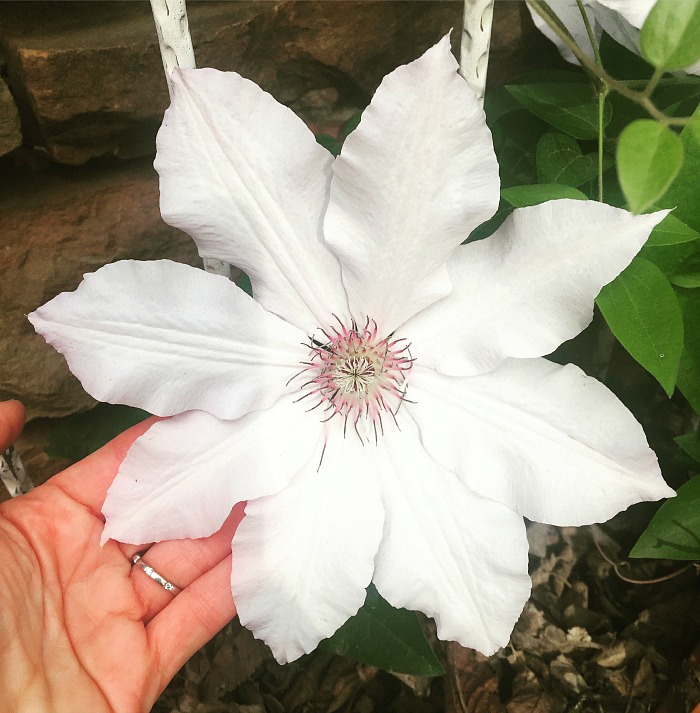
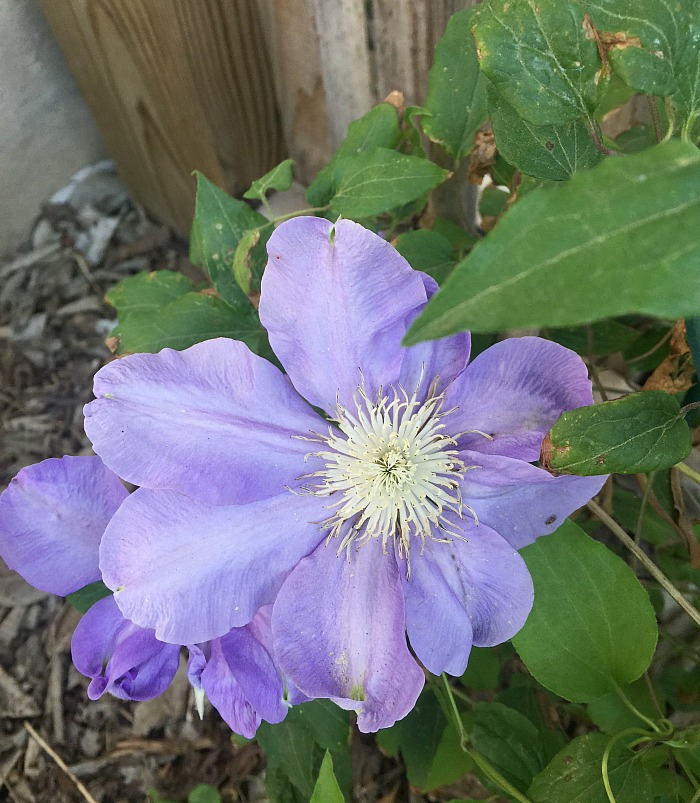
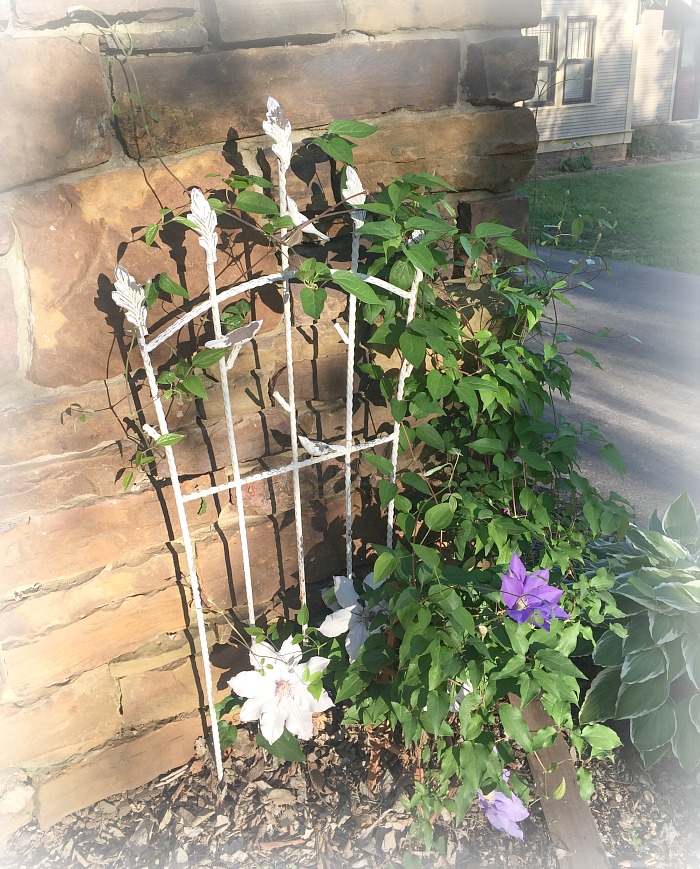
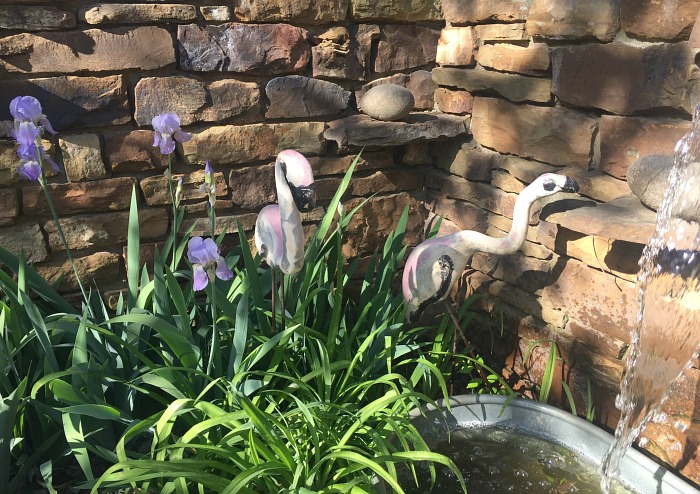
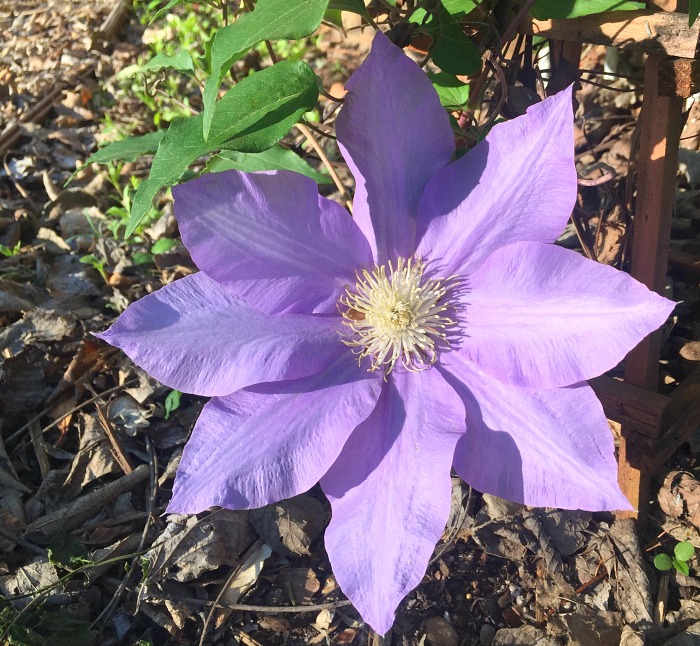








You definitely got your “Green Thumb” from your Uncle Rex. Your Clemitis are beautiful.
Talya, you make it look so easy! I’ve never been able to grow clematis
Maybe you don’t have it in the right spot? Hmm.
I love my Clemitis I have a white and a blue. Your are beautiful.
I have four:) The one at the mailbox (the oldest) is a flood of deep magenta blooms. It’s an early/late bloomer. When it withers and dries during the heat of summer, I literally cut it back to the ground; it grows vigorously again and will bloom again:) I get so many comments about it because it’s out front and very visible. P. Allen corrected my ole school pronounciation of the name—so hard for me to say it his way.
If you’ve been saying it wrong, then I probably do too!
I’ve been admiring the Clemitis in our neighborhood. Most intertwine the mailboxes. You make me want to find a place to plant one. Glad the flamingoes have returned to Washington Street.